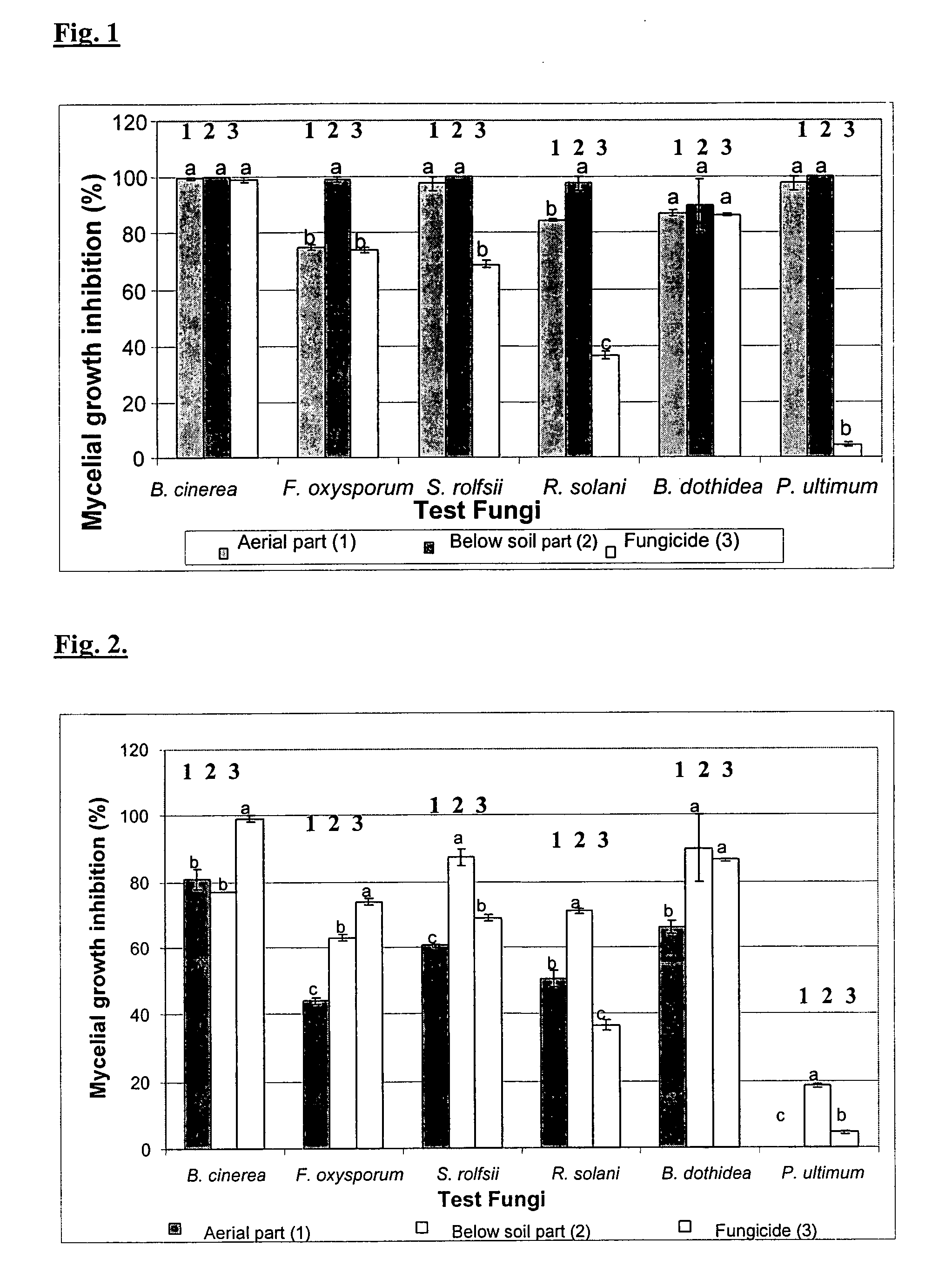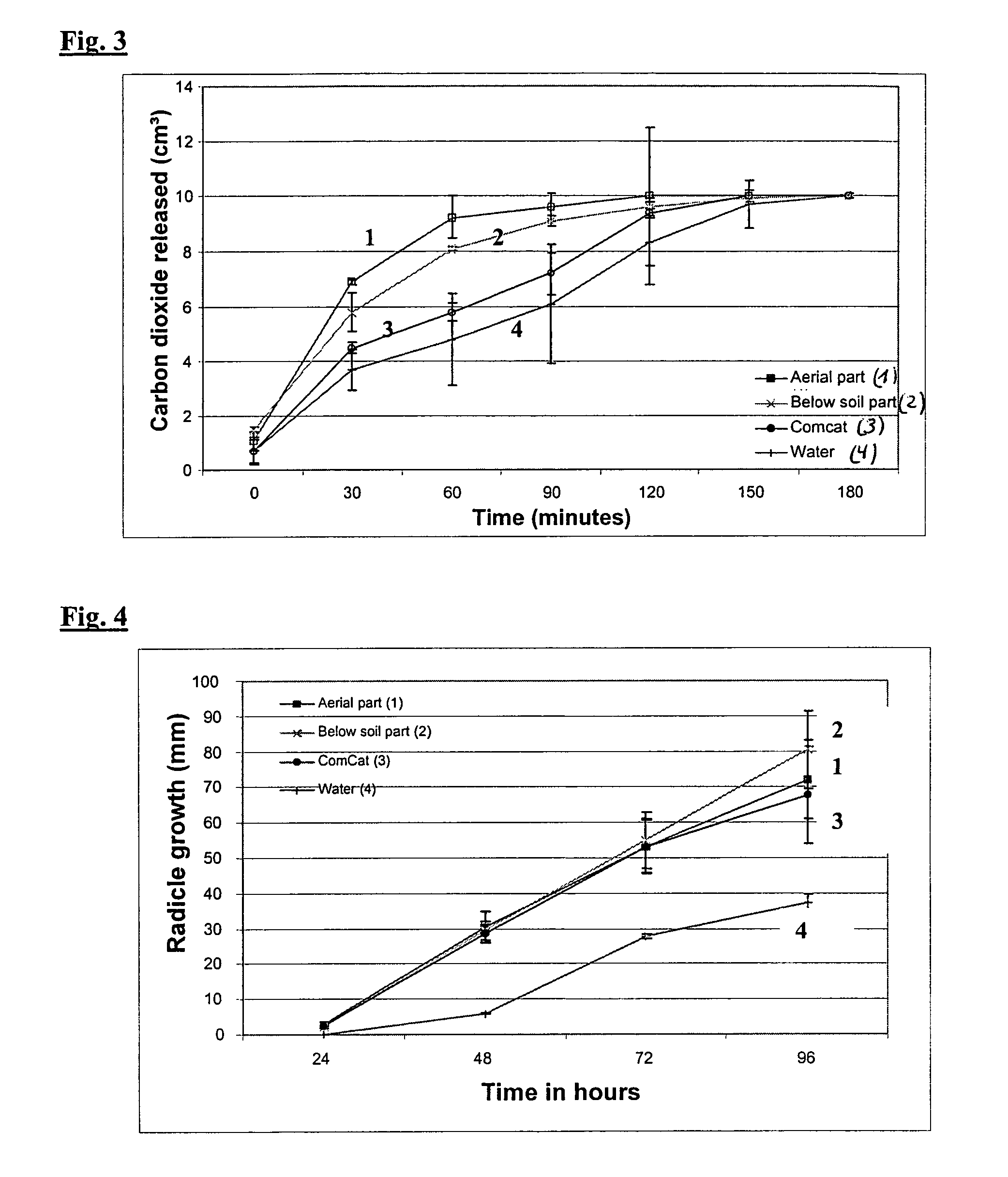Extracts and compounds from "tulbaghia violacea" and their use as biological plant protecting agents
a technology of extracts and compounds, applied in the field of plant extracts, can solve the problems of low yield, inability to achieve the same level of pathogen control in developing countries, and high yield loss, and achieve the effect of reducing the effect of preparation, easy atomization, and reducing the loss of plant material
- Summary
- Abstract
- Description
- Claims
- Application Information
AI Technical Summary
Benefits of technology
Problems solved by technology
Method used
Image
Examples
example 1
Plant Material
[0188]Whole Tulbaghia violacea plants were initially collected from the Blyde River Canyon Nature Reserve (BRC) South Africa. The taxonomic identification of the species was performed by a taxonomist from the National museum, Bloemfontein, South Africa. A voucher specimen was processed according to standard procedures and deposited in the herbarium of the museum. Bulk samples of the species were later collected from the Botanical Gardens, Bloemfontein between January and March 2001, 2002 and 2003.
example 2
Preparation of the Plant Material
[0189]Health and laboratory safety standards were followed in the handling of the unknown material as it was assumed to be dangerous. Plant material was examined beforehand for any form of infection or insect damage and such infected material was not used. Plants were divided into (a) aerial parts (stems and leaves) and (b) below soil parts (rhizome and roots). After the fresh mass of the different plant parts was determined, the plant material was dried in an oven for two weeks at 35° C. and the dry mass determined. Subsequently, dried plant material was ground, using a Retsch SM 2000 cutting mill and the dry mass determined again. After grinding, small representative amounts of each sample were transferred into plastic Ziploc bags, sealed and stored in a freezer at −20° C. until crude extracts were prepared. Percent loss during grinding was calculated as follows:
Percentlossatgrinding=(netmassofdrysample)-(netmassofgroundsample)×100(netmassofdrysamp...
example 3
Preparation of Crude Extracts
[0190]The two ground samples (aerial and below soil parts) were transferred into separate 5-litre Qorpak jars labelled and covered with 100% methanol at a ratio of two ml g−1 dry weight. The lids were closed firmly, sealed with parafilm to prevent leakage and placed on a roller mill for 24 hours. Extraction was performed twice by replacing the methanol. Subsequently, each sample was filtered twice, first under vacuum through a double layer of Whatman filter paper (No. 3 and No. 1) using a Buchner funnel and then by gravity through a single sheet of Whatman No. 1 filter paper. Most of the methanol was removed from the extracts by means of vacuum distillation at 35-40° C. using a Büchi Rotary Evaporator. On the following day the same procedure was followed with the re-extracted plant material. Final filtrates from the twice extracted plant material were combined and concentrated to dryness under vacuum by means of a Speedvac Concentrator at −140° C. for 24...
PUM
| Property | Measurement | Unit |
|---|---|---|
| grit size | aaaaa | aaaaa |
| grit size | aaaaa | aaaaa |
| concentration | aaaaa | aaaaa |
Abstract
Description
Claims
Application Information
 Login to View More
Login to View More - R&D
- Intellectual Property
- Life Sciences
- Materials
- Tech Scout
- Unparalleled Data Quality
- Higher Quality Content
- 60% Fewer Hallucinations
Browse by: Latest US Patents, China's latest patents, Technical Efficacy Thesaurus, Application Domain, Technology Topic, Popular Technical Reports.
© 2025 PatSnap. All rights reserved.Legal|Privacy policy|Modern Slavery Act Transparency Statement|Sitemap|About US| Contact US: help@patsnap.com



